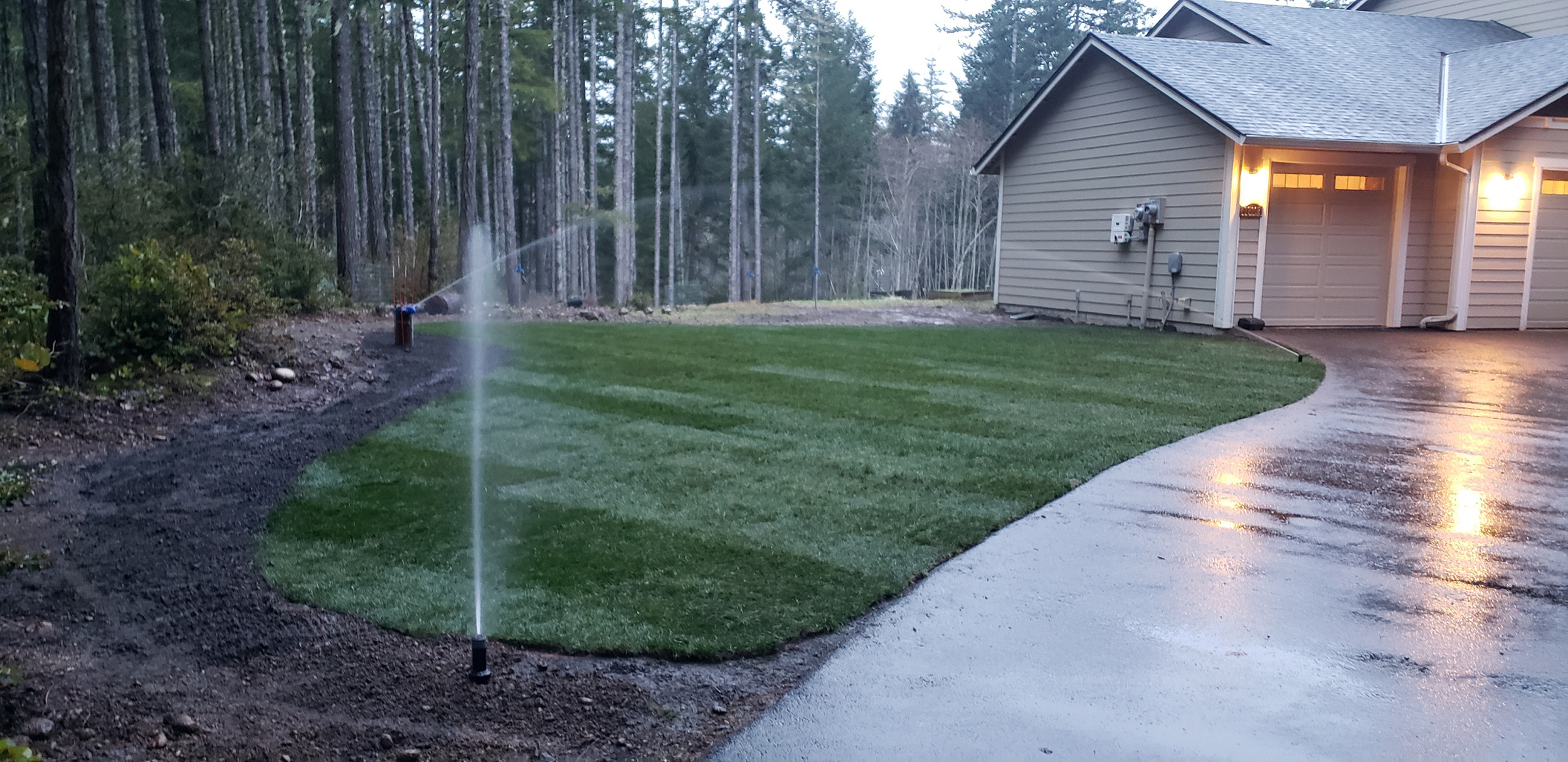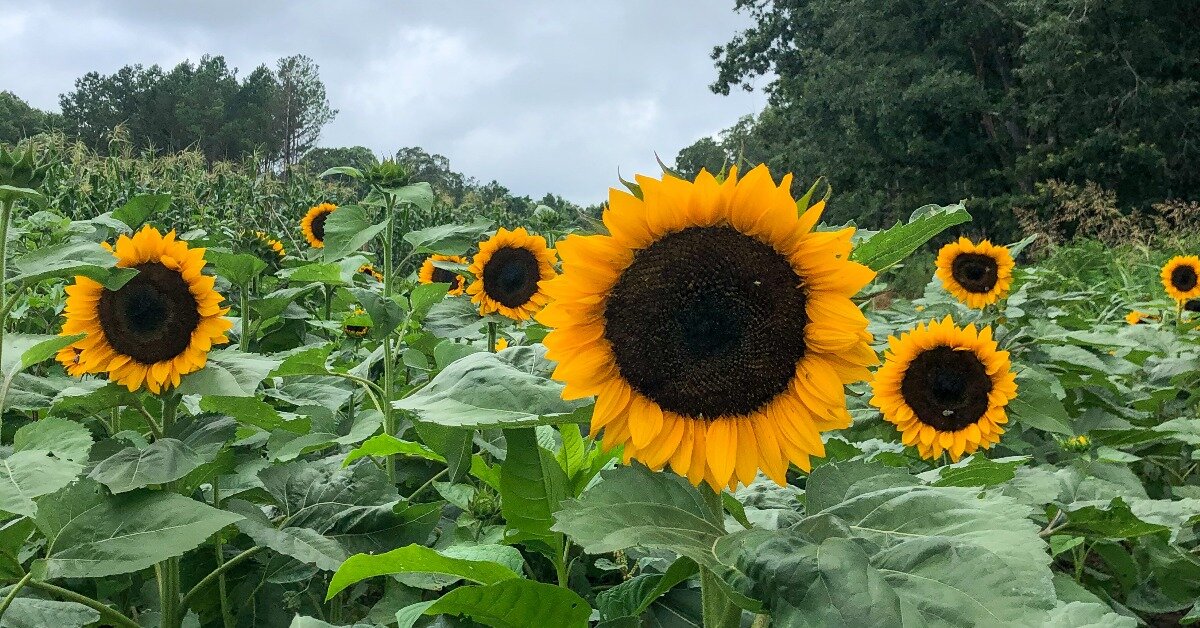Home>Gardening Tips and Tricks>Eco-Friendly Gardening>Where Do Permaculture Designers Get Their Base Map


Eco-Friendly Gardening
Where Do Permaculture Designers Get Their Base Map
Published: February 15, 2024
Discover where permaculture designers get their base map for eco-friendly gardening. Explore the essentials of creating a sustainable and beautiful outdoor space.
(Many of the links in this article redirect to a specific reviewed product. Your purchase of these products through affiliate links helps to generate commission for Chicagolandgardening.com, at no extra cost. Learn more)
Table of Contents
Introduction
Welcome to the world of permaculture, where sustainable gardening meets ecological harmony. Permaculture design is a holistic approach to cultivating and managing land, focusing on creating self-sustaining ecosystems that are beneficial to both humans and the environment. Central to the success of permaculture design is the use of base maps, which provide a foundational framework for site assessment, planning, and implementation.
Permaculture design encourages individuals to think beyond traditional gardening methods and consider the broader environmental impact of their actions. By incorporating principles such as diversity, observation, and thoughtful design, permaculturists strive to create resilient and regenerative systems that mimic nature’s patterns. A key component of this approach is the use of base maps to accurately map out and visualize the site.
Base maps serve as a crucial starting point for permaculture designers, allowing them to assess the natural features, climatic conditions, and existing resources of a site. These maps provide valuable information that guides the design process, enabling permaculturists to make informed decisions about infrastructure placement, water management, and plant selection.
By utilizing base maps, permaculturists can create designs that optimize energy efficiency, minimize waste, and enhance biodiversity. Whether you are designing a small urban garden or a large-scale permaculture farm, having a clear and accurate base map is essential to ensuring the success and sustainability of your project.
In the following sections, we will explore the various sources from which permaculture designers can obtain base maps. From government agencies and online mapping tools to satellite imagery and local knowledge, each source offers unique insights that can inform and enrich the design process. So, let’s dive in and discover where permaculture designers can find the perfect base map for their projects.
Definition of Permaculture Design
Permaculture design is a philosophy and approach to land stewardship that is rooted in ecological principles and sustainable practices. Coined by Bill Mollison and David Holmgren in the 1970s, permaculture combines the concepts of “permanent agriculture” and “culture” to emphasize the interconnectedness of human and natural systems.
At its core, permaculture design seeks to create harmonious relationships between people, the environment, and all living beings. It is a regenerative and resilient approach to land use and management that aims to meet human needs while restoring and enhancing ecosystems.
Permaculture design principles are based on the observation of patterns and processes found in nature. By mimicking these patterns and processes, permaculturists aim to build self-sustaining and biodiverse systems that require minimal external inputs and resources.
Permaculture design focuses on several core principles, including:
- Working with nature: Permaculturists understand the importance of ecosystems and strive to work in harmony with natural processes rather than against them.
- Observation and interaction: Before taking any actions, permaculturists carefully observe and analyze the characteristics of a site, including its climate, topography, and existing flora and fauna.
- Integrating rather than segregating: Permaculture design seeks to create integrated systems where different elements work together to maximize efficiency, productivity, and resilience.
- Using renewable resources: With an emphasis on sustainability, permaculturists prioritize the use of renewable resources and avoid depleting non-renewable resources whenever possible.
- Applying small-scale, intensive systems: Permaculture design often involves creating small-scale, intensive systems that maximize productivity while minimizing negative environmental impacts.
By following these principles, permaculturists can create thriving ecosystems that provide food, water, shelter, and other essential resources in a sustainable and regenerative manner.
Permaculture design is not limited to gardens and farms; it can be applied to any aspect of human life, including architecture, energy systems, and social structures. It is a holistic approach that recognizes the interconnectedness of all elements within a system and aims to foster harmony and resilience at all levels.
Importance of Base Maps in Permaculture Design
Base maps play a crucial role in the permaculture design process, serving as an essential tool for assessing and understanding the existing conditions of a site. These maps provide a visual representation of the site’s natural features, allowing permaculture designers to make informed decisions and create effective designs that align with their sustainability goals. Here are some of the key reasons why base maps are important in permaculture design:
Site Assessment: Base maps allow permaculture designers to assess the unique characteristics of a site, such as its topography, soil types, water sources, and microclimates. This information is invaluable for identifying strengths, challenges, and opportunities that will inform the design process.
Design Planning: With accurate base maps, designers can create a detailed plan for the layout of elements within the site. This includes determining the placement of buildings, water catchment systems, garden beds, and other infrastructure. Base maps help ensure efficient use of space, optimal resource utilization, and effective interconnections between elements.
Energy Efficiency: By analyzing sun exposure patterns on base maps, designers can strategically position buildings and outdoor spaces to maximize solar gain or shade, depending on the climate and desired outcomes. This enhances energy efficiency and reduces the need for artificial heating or cooling.
Water Management: Base maps assist in understanding the site’s water flow patterns, including natural drainage paths, existing water bodies, and potential areas for water catchment and storage. This knowledge enables designers to develop effective water management strategies, such as rainwater harvesting systems and swales, to optimize water usage and prevent erosion.
Plant Selection: Base maps provide information on soil types, nutrient levels, and existing vegetation, aiding in the selection of appropriate plants for the site. By taking into account factors such as sun exposure, water availability, and soil pH, designers can create plant guilds and food forests that thrive in the specific conditions of the site, reducing the need for chemical inputs and enhancing biodiversity.
Resource Utilization: Assessing existing resources on base maps, such as mature trees, wind patterns, and wildlife habitats, allows designers to incorporate these assets into the overall design. By utilizing natural resources effectively, permaculture designs can minimize waste and reduce reliance on external inputs.
Long-term Planning: Base maps provide a foundation for long-term planning and management of the site. They document changes and improvements made over time, allowing designers and land stewards to track progress, evaluate the effectiveness of implemented strategies, and adapt the design as needed.
In summary, base maps are an invaluable tool in permaculture design, facilitating site assessment, planning, and implementation. By providing a comprehensive understanding of the site’s natural features and resources, base maps empower permaculturists to create sustainable, resilient, and harmonious designs that align with the principles of permaculture.
Sources for Permaculture Base Maps
Permaculture designers have access to a wide range of sources for obtaining base maps. These sources provide valuable information that forms the foundation for the design process. Let’s explore some of the key sources for permaculture base maps:
- Government Agencies: Local government agencies, such as municipal planning departments, often maintain detailed maps and GIS (Geographic Information System) databases. These resources can provide valuable data on land boundaries, zoning regulations, utilities, and other important aspects of the site. Contacting your local government agency is a good starting point for obtaining up-to-date and accurate base maps.
- Online Mapping Tools: Numerous online mapping tools, such as Google Maps and OpenStreetMap, offer satellite imagery and street view options. These user-friendly platforms allow permaculture designers to zoom in on their specific site and capture high-resolution images that can be used as base maps. These tools often have measurement features and overlays that facilitate site analysis and planning.
- Satellite Imagery: Satellite imagery provides an aerial view of the site, giving permaculture designers a bird’s-eye perspective. Online platforms like Google Earth, NASA’s Earth Observing System Data and Information System (EOSDIS), and Landsat offer free access to satellite imagery with different resolution options. By using satellite imagery as a base map, designers can observe patterns, topography, vegetation cover, and other site characteristics that are crucial for the design process.
- Topographic Maps: Topographic maps provide detailed information about the elevation and contours of a site. They show variations in terrain, slope, and landforms, which are crucial considerations for designing water management systems, such as swales and contour beds. The United States Geological Survey (USGS) and other government mapping agencies offer topographic maps in both digital and print formats.
- Historical Maps: Historical maps can provide valuable insights into the past land use and ecological features of a site. Local archives, historical societies, and libraries often have collections of old maps that can be used as references. These maps can provide information on natural features, such as waterways or forests, that may have been altered or lost over time. Integrating historical maps into the design process can foster a sense of place and honor the site’s cultural and ecological heritage.
- Local Knowledge and Community Input: Engaging with the local community and gathering firsthand knowledge can be a valuable source of information for base maps. Local residents, indigenous communities, and experienced farmers and gardeners can provide insights into the site’s microclimates, wildlife habitats, and other important aspects. Community input can enrich the accuracy and context of the base maps and foster a collaborative and inclusive design process.
Ultimately, combining multiple sources for base maps ensures a comprehensive understanding of the site and allows for a more informed and thoughtful design. Permaculture designers can leverage these sources to assemble a base map that accurately represents the existing conditions of the site and serves as a guide for sustainable and regenerative design.
Government Agencies
Government agencies, such as municipal planning departments and environmental agencies, are valuable sources for obtaining base maps in permaculture design. These agencies typically maintain detailed maps and geographic information system (GIS) databases that provide crucial information for designing sustainable landscapes.
Local government agencies often have maps that show land boundaries, zoning regulations, and utility infrastructure. These maps can help permaculture designers understand legal and regulatory constraints on the site and guide decision-making processes. Zoning information, for example, can inform design choices related to land use, setbacks, and building placement.
Government agencies also provide data on natural resources, such as water bodies, wildlife habitats, and protected areas. Accessing this information helps permaculture designers identify important ecological features and design interventions that minimize the impact on fragile ecosystems.
In addition to maps, government agencies often offer GIS databases that contain layers of data, such as soil types, hydrology, and vegetation cover. These datasets can be overlaid on base maps to gather site-specific information relevant to permaculture design. For example, soil data can inform plant selection and irrigation strategies, while hydrology data can guide the design of drainage systems and water catchment solutions.
When working with government agencies, it is advisable to engage with planning or environmental departments to obtain the most accurate and up-to-date information. They can often provide digital copies of maps and data, making it easier to integrate with design software or use as overlays in online mapping tools.
It is important to note that government agencies may have limitations on the availability of certain data or require permission to access some datasets. However, establishing a relationship with local agencies and understanding their processes can lead to fruitful collaborations and facilitate information exchange.
By harnessing the resources provided by government agencies, permaculture designers can leverage reliable and comprehensive data to create designs that are in harmony with local regulations, protect natural resources, and promote sustainable practices.
Online Mapping Tools
Online mapping tools have revolutionized the way permaculture designers access and utilize base maps. These tools provide user-friendly interfaces that allow designers to explore and analyze sites from the comfort of their own homes or offices.
One of the most popular online mapping tools is Google Maps. With its satellite imagery and street view features, Google Maps offers a wealth of information for permaculture design. Designers can zoom in on their specific site, capture high-resolution images, and use them as base maps. The measurement tools in Google Maps enable precise analysis of distances and areas, facilitating the design of elements such as garden beds, pathways, and infrastructure.
OpenStreetMap is another notable online mapping tool that relies on crowd-sourced data. It provides detailed maps with various layers that can be customized to suit specific design needs. OpenStreetMap offers the advantage of being open source, allowing users to contribute and update the data to keep it accurate and relevant.
Other online mapping tools, such as ArcGIS Online and MapQuest, offer similar functionalities and can be used to gather geospatial data and create base maps for permaculture design. The availability of measurement and annotation tools in these platforms enables designers to draw overlays, mark key features, and add notes directly onto the maps.
Online mapping tools not only provide access to satellite imagery but also offer additional features, such as terrain maps, 3D visualization, and historical imagery. These features allow designers to gain a comprehensive understanding of the site’s topography, microclimates, and changes over time.
One important consideration when using online mapping tools is the availability of data and its accuracy. While these tools provide high-resolution imagery, there may be limitations in terms of currency and resolution in certain regions. It is advisable to cross-reference online maps with other sources, such as government agencies or field observations, to ensure the accuracy of the data.
Despite these limitations, online mapping tools have revolutionized the accessibility and ease of use of base maps for permaculture designers. They enable designers to gather valuable information, visualize the site, and make informed decisions that align with permaculture principles and goals.
Satellite Imagery
Satellite imagery is an invaluable source of base maps for permaculture designers. It provides a bird’s-eye view and captures detailed information about the site’s features, such as land cover, vegetation, and topography.
Platforms like Google Earth, NASA’s Earth Observing System Data and Information System (EOSDIS), and Landsat offer access to free and high-resolution satellite imagery. Designers can zoom in on their specific site and capture images that can be used as base maps for analysis and planning.
Satellite imagery allows permaculture designers to observe patterns and variations across the site. They can analyze features such as slope, aspect, and sun exposure to inform design decisions related to building placement, water management, and plant selection.
By studying the vegetation cover in satellite imagery, designers can identify existing plant communities and incorporate native or adaptive species into their designs. They can also assess land use patterns and identify areas that may require remediation or habitat restoration.
Satellite imagery provides valuable information about water resources on the site. Designers can analyze natural drainage paths, identify water bodies, and assess the potential for water catchment and storage. This information aids in developing effective water management strategies, such as rainwater harvesting systems or contouring for erosion control.
One of the advantages of satellite imagery is its ability to capture changes over time. Historical imagery provides a valuable perspective for understanding the site’s evolution and can reveal long-term trends or disturbances. By comparing images taken at different times, designers can gain insights into the impact of human activities or natural processes on the site’s ecological health.
While satellite imagery offers a wealth of information, it is important to consider the limitations. Image resolution can vary depending on the platform, and images may not always capture fine details or small-scale features. Additionally, cloud cover and seasonal variations can affect the visibility of certain features in satellite imagery.
Despite these limitations, satellite imagery remains an invaluable tool for permaculture designers. It provides a comprehensive and objective view of the site, enabling designers to conduct detailed assessments, make informed decisions, and create designs that are in harmony with the natural landscape.
Topographic Maps
Topographic maps are essential sources of base maps for permaculture designers. These maps provide detailed information about the elevation, contours, and landforms of a site, offering valuable insights that are crucial for design and planning.
Topographic maps display the three-dimensional characteristics of the site on a two-dimensional surface. They use contour lines to represent changes in elevation, helping designers understand the slope and terrain variations across the site.
Permaculture designers can use topographic maps to identify key features such as ridges, valleys, and watercourses. This information is vital for designing water management systems, like swales and terraces, that leverage the natural flow of water and prevent erosion.
Contour lines on the topographic maps also reveal valuable information about water catchment opportunities and potential areas for the creation of ponds or other water storage solutions. By analyzing the contour lines, designers can determine optimal locations for water collection and storage that work with the natural slope of the land.
Topographic maps assist in conducting site analyses and identifying microclimates within the site. Designers can assess areas with varying sun exposure, wind patterns, and frost pockets, enabling them to make informed decisions on suitable locations for specific plantings or structures.
In addition to slope and elevation information, topographic maps often provide additional details such as roads, trails, and landmarks. This information is useful for designing walkways, access points, or navigating the site.
The United States Geological Survey (USGS) is a well-known source of topographic maps, offering both digital and print formats. Many other countries and regions also have government mapping agencies that provide topographic maps for specific areas.
When using topographic maps, it is important to ensure that the map scale is suitable for the project at hand. Larger-scale maps provide more detailed information but cover smaller areas, while smaller-scale maps cover larger areas but with less detail. The appropriate scale depends on the size and scope of the permaculture project.
Integrating topographic maps with other sources, such as satellite imagery or local knowledge, allows designers to have a comprehensive understanding of the site’s natural features and better inform their permaculture designs.
Historical Maps
Historical maps are valuable sources of base maps for permaculture designers, providing insights into the past land use and ecological features of a site. These maps offer a glimpse into the site’s history and can aid in creating designs that honor the landscape’s cultural and ecological heritage.
Local archives, historical societies, and libraries are excellent places to access historical maps. These maps may date back several decades or even centuries, presenting a unique perspective on how the site has evolved over time.
Historical maps can provide information on natural features that may have changed or been lost over the years. They may show the location of rivers, wetlands, forests, or other significant ecological elements that have since been altered due to human activities.
By referencing historical maps, permaculture designers can gain insights into the previous land uses of the site. This knowledge can be valuable in identifying potential issues, such as soil degradation or pollution, that require remediation. Understanding past land use patterns also helps designers implement strategies that regenerate and restore the site’s ecological balance.
Historical maps can also aid in design decisions that preserve cultural heritage and enhance the site’s aesthetics. For example, the location of heritage structures, cultural landmarks, or old roads can inform the placement of new infrastructure or design features.
When using historical maps, it’s important to consider changes in scale and accuracy over time. Mapping techniques and surveying methodologies may have varied, so overlaying historical maps with modern maps or satellite imagery can help assess any discrepancies.
Integrating historical maps with present-day data and information sources enriches the permaculture design process. It enables designers to create landscapes that resonate with the site’s past while aligning with present sustainability goals.
By valuing and incorporating historical maps, permaculture designers can create designs that showcase the site’s unique history, foster a sense of place, and contribute to the preservation and restoration of the local cultural and ecological heritage.
Local Knowledge and Community Input
When it comes to obtaining base maps for permaculture design, one of the most valuable sources is local knowledge and community input. Engaging with the local community can provide unique insights into the site’s history, ecology, and cultural significance, enriching the design process.
Local residents, indigenous communities, and experienced farmers and gardeners possess intimate knowledge of the land and its intricacies. They can provide information about microclimates, wildlife habitats, soil conditions, and other site-specific details that may not be captured in traditional maps or satellite imagery.
By tapping into this wealth of knowledge, permaculture designers can gain a deeper understanding of the site and make informed decisions that resonate with the local context. Local knowledge helps designers develop designs that are well-adapted to the unique conditions of the site, considering factors such as prevailing winds, seasonal patterns, and indigenous plant species.
Further, including community input in the design process fosters collaboration, inclusivity, and a sense of ownership among community members. By engaging with local stakeholders, designers can better address community needs and aspirations, encouraging a stronger sense of connection between people and the land.
Community input can also help unveil hidden stories and historical information about the site. Local residents may share their memories or ancestral knowledge, providing insights into past land use practices, traditions, and cultural significance. This understanding allows designers to incorporate elements that honor the site’s history and cultural heritage.
A community-driven design approach encourages participation, education, and empowerment. By involving community members in the decision-making process, designers can create spaces that meet the specific needs and aspirations of the people who will interact with and benefit from the permaculture design.
Local knowledge and community input should be considered alongside other sources like government maps and satellite imagery. By integrating these different perspectives, designers can create holistic and inclusive designs that respect and reflect the site’s social, cultural, and ecological dynamics.
Ultimately, embracing local knowledge and community input ensures that permaculture designs are not only ecologically sound but also socially and culturally relevant, fostering a sense of stewardship and connection to the land among community members.
Conclusion
Base maps are essential tools in permaculture design, providing a foundational framework for assessing, planning, and implementing sustainable landscapes. By incorporating various sources of base maps, permaculture designers can gain valuable insights into the site’s natural features, historical context, and community dynamics.
Government agencies offer detailed maps and GIS data that outline land boundaries, zoning regulations, and utilities. These maps facilitate compliance with local regulations and inform design decisions related to infrastructure placement and resource utilization.
Online mapping tools, such as Google Maps and OpenStreetMap, provide satellite imagery, street views, and measurement features. These tools allow permaculture designers to explore and analyze sites remotely, supporting site assessments and precise design planning.
Satellite imagery offers a bird’s-eye view, capturing details about land cover, vegetation, and topography. Designers can leverage this information to analyze patterns, understand water flow, and make informed decisions regarding planting, water management, and energy efficiency.
Topographic maps provide insights into slopes, contours, and landforms, informing water management strategies, plant selection, and site analyses. These maps are particularly useful for designing swales, terraces, and other elements that maximize water catchment and minimize erosion.
Historical maps offer a glimpse into the past land use and ecological features of a site, enabling designers to make design choices that honor the landscape’s cultural and ecological heritage. Integrating historical maps with present-day data provides a comprehensive understanding of the site’s evolution over time.
Local knowledge and community input play a vital role in enriching base maps. Engaging with the local community allows designers to gather insights into microclimates, wildlife habitats, soil conditions, and cultural significance. Community participation fosters collaboration, inclusivity, and a sense of ownership over the permaculture design.
In the interconnected world of permaculture, the combination of various sources of base maps ensures that designers have a comprehensive understanding of the site’s natural, historical, and cultural aspects. By incorporating these base maps into their design process, permaculture designers can create sustainable and regenerative landscapes that harmonize with the environment, honor the past, and fulfill the needs of the present and future generations.








